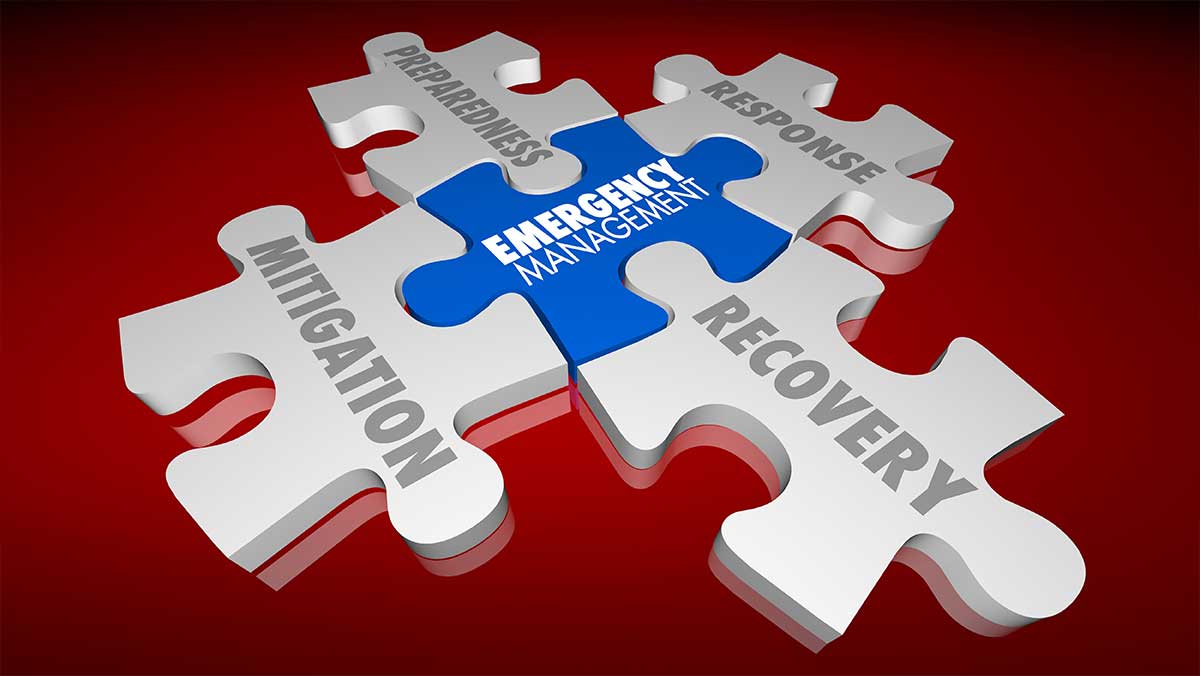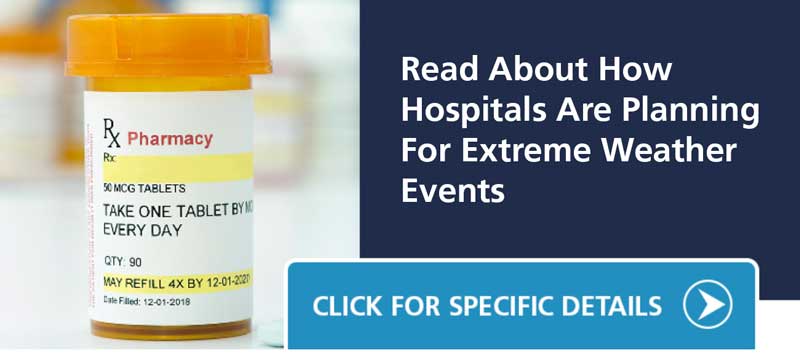How many times have you been taken by surprise due to an unexpected event? From the terrorist attacks on the World Trade Centers to the COVID pandemic and Russia’s war with Ukraine, there are hundreds of examples throughout history where very few people worldwide, from noted experts to casual observers, anticipated and prepared for those events to occur.
The fact is, we don’t know what’s on the horizon. Take the recent torrential rains in St. Louis and eastern Kentucky. Although they were possible, both were 1-in-1,000-year flood events and had a .1% chance of occurring in a given year. That’s why preparing for what may happen is so important for any organization. And it’s especially important for hospitals that play such a critical role in their communities. Mark Twain once said, “History doesn’t always repeat itself, but it often rhymes,” and that’s the idea behind preparing for a full spectrum of emergencies or taking an “all-hazards” approach to emergency management.
Although the biggest risks remain the ones you don’t see coming, implementing effective emergency management standards serves an important purpose. They help you meet the challenges you can imagine and the ones you don’t that you may face in the future.
What Are The Emergency Management Standards?
The Joint Commission created emergency management standards to help organizations prepare for a full spectrum of emergencies including:
- IT outages
- Weather-related incidents
- Power outages
- Natural disasters
- Fire (including wildfires)
- Facilities management incidents
- Security-related issues
- Health and safety incidents
These standards apply to all Joint Commission-accredited hospitals and critical access hospitals and were recently updated to reflect the critical lessons learned from the COVID pandemic. These updates went into effect on July 1, 2022.
Emergency Management Chapters
The new emergency management standards contain two distinct chapters for hospitals (HAH) and critical access hospitals (CAH). The new guidelines, containing restructured and condensed elements of performance, support the planning and decision-making necessary to ensure patient safety and the security of patients, staff, and the community before, during, and after an emergency or disaster occurs.
On a side note, the numbering for this chapter changed. It starts with emergency management standard 09.01.01 (911), which was done to honor the men, women, victims, and first responders of the 9/11 tragedy.
4 Elements Of Emergency Management
James Baker, former Secretary of State, wrote a book in which he identified a management technique his grandfather used successfully in his law firm. With every new hire he emphasized one crucial point:
“Proper prior planning prevents poor performance.”
Although it’s impossible to entirely prevent the disruptions a disaster or other emergency might trigger, taking the appropriate emergency response planning steps can minimize the impacts if or when that emergency occurs. That’s the purpose of the four elements of emergency management which incorporate:
- Mitigation
- Preparedness
- Response
- Recovery
Mitigation
Mitigation starts with assessing risks across the spectrum of potential emergencies or disasters. That includes evaluating known risks and prioritizing them to understand vulnerabilities and prepare to respond to emergencies. Engaging with key hospital stakeholders as well as experts in a variety of areas outside your organization, including university resources and organizations in your community that have developed effective emergency management plans, can foster the development of effective mitigation steps.
Preparedness
You can’t prevent an emergency from occurring. But preparing for all types of emergencies through planning, training, and educational activities can minimize their overall impact.
Some of those key planning topics should include:
- Emergency operations - that communicates and coordinates information and resources
- Patient care - addressing patient care and clinical support activities including transfer plans, continuity of care, and rapid acquisition of patient care supplies and health care records
- Safety and security - defining steps required during an emergency or disaster incident
- Resource management - managing resources and assets during an incident
- Disaster recovery - creating a structured plan that assists an organization in recovering from an emergency that has occurred
Ultimately, these plans require testing through ongoing education and real-life training to ensure their effectiveness.
Response
In the immediate aftermath of a disaster, even when the danger has subsided, healthcare organizations still aren't yet functioning normally. But leveraging the preparedness plans and education and training provided to staff members allow for a more effective recovery.
Ensuring the continuity of essential services is one of the key elements of the emergency response phase. This includes:
- Identifying and maintaining essential hospital services, as well as the resources these services require
- Ensuring critical supplies such as food and water are available
- Maintaining an inventory of all equipment, supplies, and pharmaceuticals, including a short-supply alert mechanism
Recovery
The recovery process requires balancing the more immediate need to return the operation to normalcy with the longer-term goal of reducing future vulnerability. Depending on the type of emergency, a hospital can experience a number of challenges. For example, a natural disaster might cause:
- Physical damage to the facility
- Patient surge due to injuries sustained during the disaster
- Staff shortages
Conversely, a cyber attack creates a different set of problems. It could bring down EHR systems, medical devices and more, requiring the transfer of certain patients to other facilities and force the use of manual formats to continue operating.
United Ad Label
With natural disasters and cyber security breaches on the increase, coupled with the man-made disasters that regularly occur, emergency management planning takes on an even more important role in healthcare organizations. With medication labels, admission labels and patient wristbands, and more, United Ad Label products are an important component of effective preparedness plans. Contact us to learn more.

